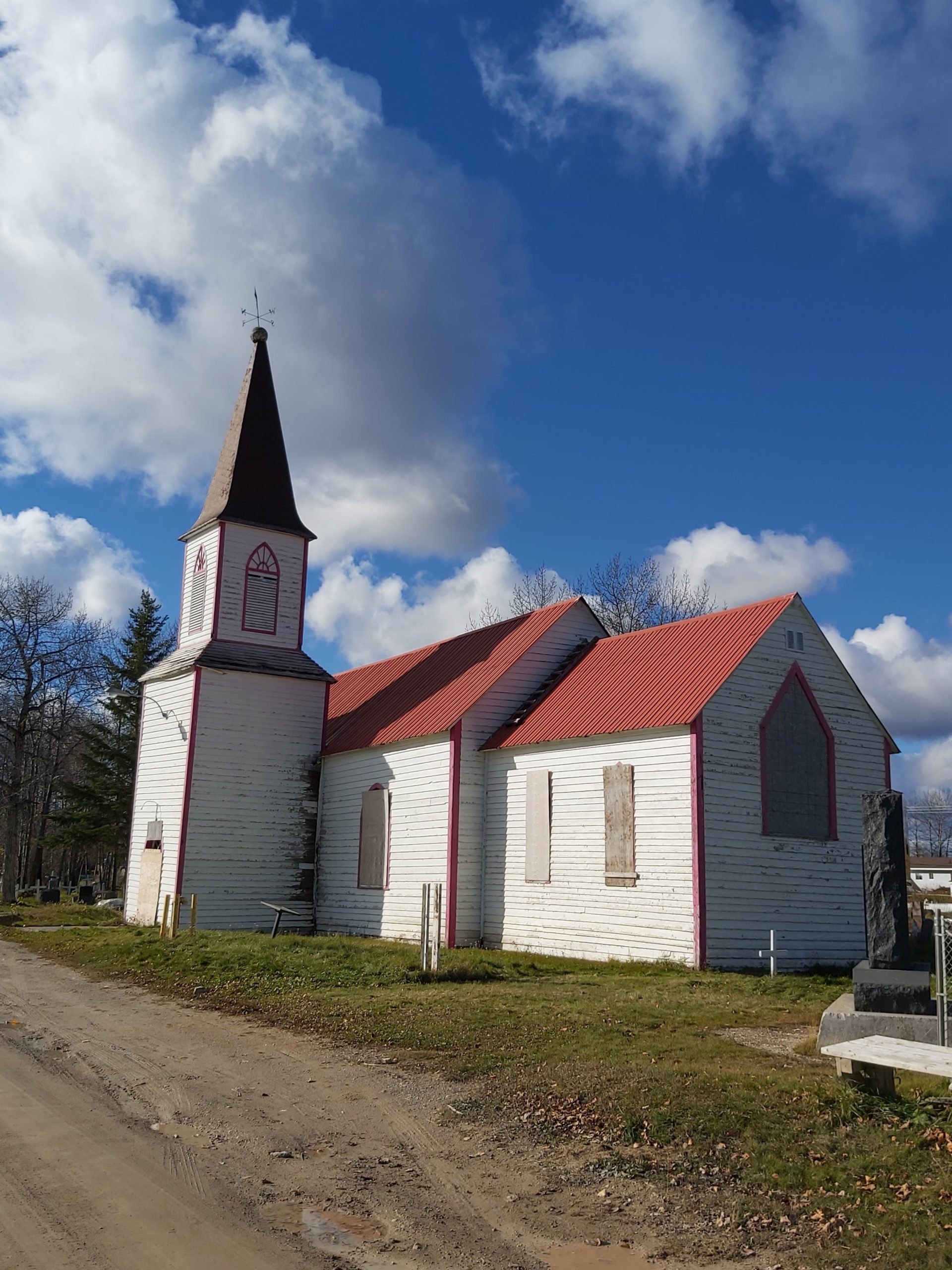St. Thomas’ Anglican Church

Why it matters:
“If you google Paris, images of the Eiffel Tower will show up,” says Reverend Canon Norm Wesley. “If you google Moose Factory, St. Thomas’ church will show up. It’s iconic.” An ordained Anglican priest, Canon Wesley is also former Chief of Moose Cree First Nation (MCFN), and co-chair, with Logan Jeffries, of the Save St. Thomas Committee. Moose Factory is a small island community on the James Bay coast in northern Ontario. Two thirds of Moose Factory island is a MCFN reserve, though the traditional territory of the Môsonîw Ililiw is much larger and includes the off-reserve portion of the island where St. Thomas’ is located. All local Môsonîw Ililiw people, with the exception of the youngest generation born in the past decade, have attended important events in St. Thomas’s Church – baptisms, marriages and especially funerals.
Consecrated in 1864, St. Thomas’ Anglican Church was built over the preceding eight years by Hudson’s Bay Company (HBC) carpenters and labourers, many of them mixed Cree-European ancestry, with seasonal help from Cree hunters. St. Thomas Anglican Church – a timber Gothic style church with a bell tower, choir, and nave – is a critical part of the Moose Factory cultural landscape. First established in 1673 at a traditional Cree summer gathering place, Moose Factory is the second oldest HBC site in what is now Canada, and was long the HBC headquarters for the James Bay watershed. By the 1870s, it was a regional overland and trans-Atlantic communications hub and home to shipbuilders, a printing press, a bishop, and a growing multicultural population. Marriages at St. Thomas’s Anglican were at times announced in newspapers overseas like The Times in London. Featured in the 1944 National Film Board documentary “Fur Country,” Moose Factory was still very much an HBC “company town” visited only seasonally by most Cree, but within a few decades, the town transitioned to permanent settlement for the Môsonîw Ililiw, on whose expertise and hospitality the Company had always depended.
On a national level, Moose Factory is one of Canada’s oldest continuous Indigenous-European “Middle Grounds”; for almost three and half centuries, relationships have been defined above all by socio-economic interdependence and reciprocity, interculturality and intermarriage. This culture of reciprocity was weakened during the most intense moments of colonial imposition (particularly in the mid-20th century), but it persisted nonetheless and is one of the strengths that the community carries forward, as it seeks to build a future with its shared past. It can help envision, inspire and advance Canada-wide reconciliation.
While the 1957 Moose Factory National Historic Site designation was given to several buildings associated with the HBC post, St. Thomas’ Anglican is considered the area’s most important heritage building by the current community: members of Moose Cree First Nation, MoCreebec Council of the Crees, and the wider Moose Factory and Moosonee communities. Reverend Canon Norm Wesley, explains why he has taken on the role of Co-Chair of the Save St. Thomas Committee, established in 2020 by the Moose River Heritage and Hospitality Association: “There are mixed feelings over the church, but one thing is for sure: it has impacted us considerably in terms of its mission, in terms of our people. My mother and my father, the previous generation, were so close to the church. But at the same time, there was a lot of stuff that went on, as we all know, within the church, …. In a time when we are tearing down statues and monuments, this community has chosen to uphold this building, this historic church, because of what it stands for … in remembrance of our heritage, our past, the good things and the bad things and things that we say we will never, ever forget. … Many, many people have come from far and wide to see [it] … It’s important to us and … to the history of this country.”
Why it’s endangered:
St. Thomas’ Anglican Church closed to regular services in 2006 due to structural safety concerns and currently sits empty; the Anglican congregation now meets in the former Catholic Church. The St. Thomas’s nave and chancel are of log-timber construction with softwood board cladding. While the last detailed investigation of the building fabric was in 1979, some decay is evident in the logs resting on the stone foundations. The church tower suffers from defective foundations and poor ground conditions and now an open gap in the roof between the tower and nave. Elsewhere in the roof, water is entering the building through defective roof coverings at several locations helping to rapidly advance decay in the wooden fabric of the building. The cost estimates for repairs are approximately $2.5 million. The Moose River Heritage and Hospitality Association has identified the preservation of the church as its highest priority project, but has not yet been able to secure funding. Their aim is to save and restore St. Thomas’ Anglican Church, and revitalize it as a community venue and heritage site that can be used during Moose Factory’s 350th anniversary celebrations in 2023 and beyond.
What You Can Do:
Join the Moose River Heritage & Hospitality Association mailing list here to get the latest news and initiatives.
Location: Moose Factory, ON
Endangered Places List: 2021
Status: Endangered
